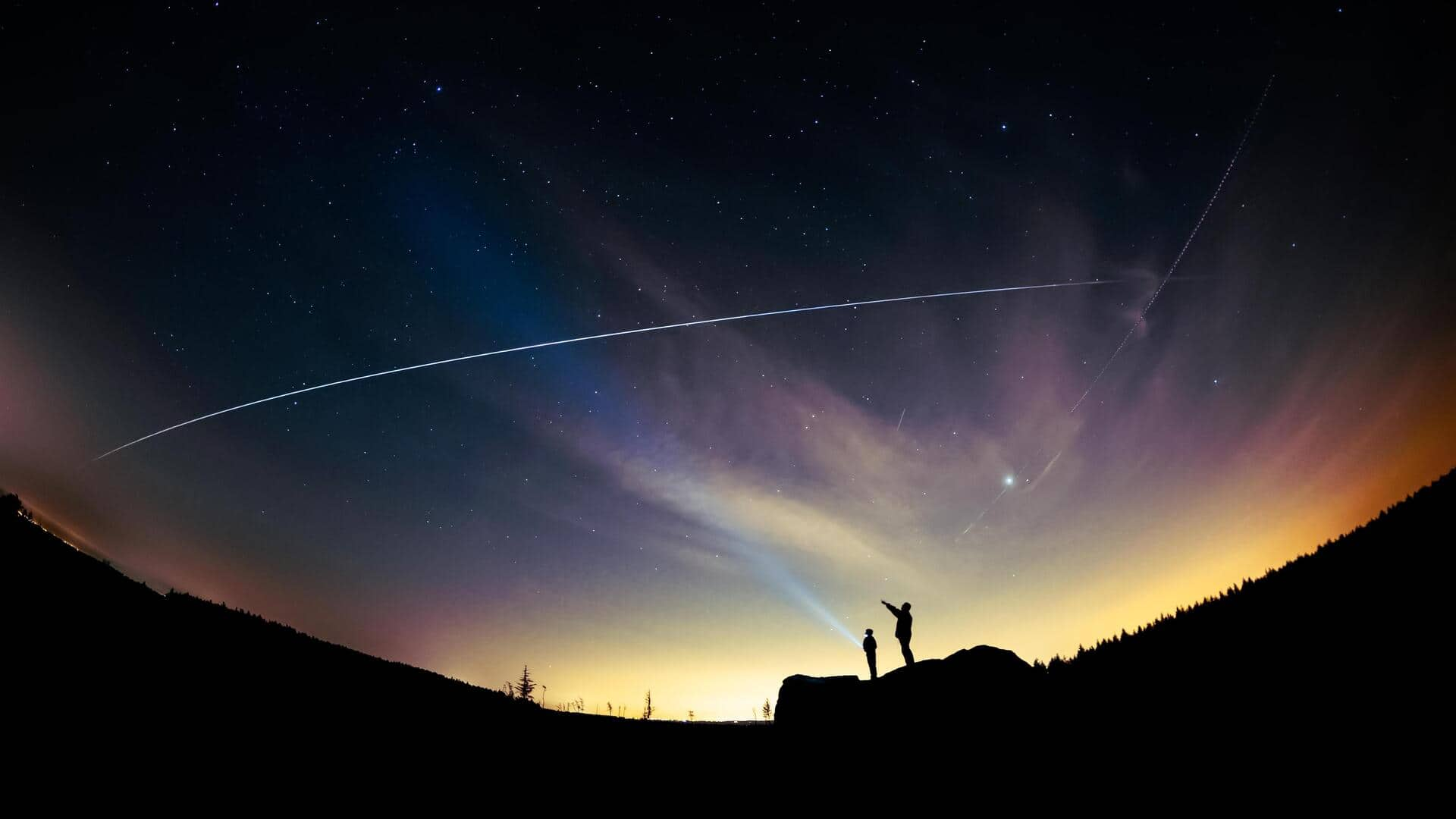
How to spot the ISS flying over India this week
What's the story
The International Space Station (ISS), a symbol of global cooperation and scientific advancement, has been orbiting our planet for over two decades. Traveling at a staggering speed of 28,000km/h, the ISS completes one lap around Earth every 90 minutes. This means astronauts aboard get to witness 16 sunrises and sunsets daily. But how can you see it from the ground?
Viewing tips
When is ISS visible from Earth
The ISS can be seen from the Earth as it reflects sunlight, much like the Moon. However, unlike the Moon, it isn't bright enough to be seen during the day. The best time to spot the space observatory is within a few hours before or after sunrise or sunset when it's illuminated by the Sun but the sky isn't too bright.
Viewing guide
What it looks like and what apps can help
The ISS appears as a bright, fast-moving object during twilight hours. It resembles a star or plane but doesn't have flashing lights. The station crosses the sky in just a few minutes, so timing is crucial. NASA's "Spot the Station" mobile app and other apps like ISS Detector provide detailed sighting information such as time of visibility, duration before it dips below the horizon, and compass directions indicating where it will enter/exit your field of view.
App features
Where to download the apps
The Spot the Station app and ISS Detector app are available for free on iOS and Android. They provide push notifications for upcoming viewing opportunities based on your exact location. An augmented reality (AR) feature also helps you locate the station in the sky using your phone's camera and compass, and live tracking of its current position as it orbits Earth.
Viewing tips
Key dates and timings for spotting the ISS over India
The International Space Station will make several visible passes over India in the coming days. Here are the key dates and times to look up: July 7: 8:48pm - 8:55pm July 8: 4:59am - 5:05am; 7:59pm - 8:06pm; 9:38pm - 9:41pm July 9: 4:10am - 4:16am; 8:48pm - 8:53pm July 10: 3:22am - 3:27am; 4:58am - 5:04am; 7:59pm - 8:05pm July 11: 2:34am - 2:36am; 4:09am - 4:15am July 12: 7:59pm - 8:03pm